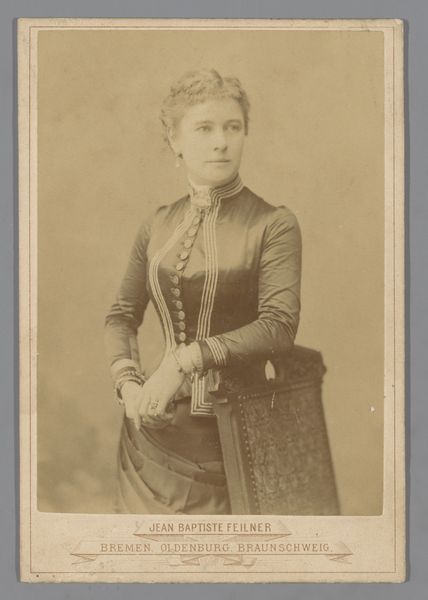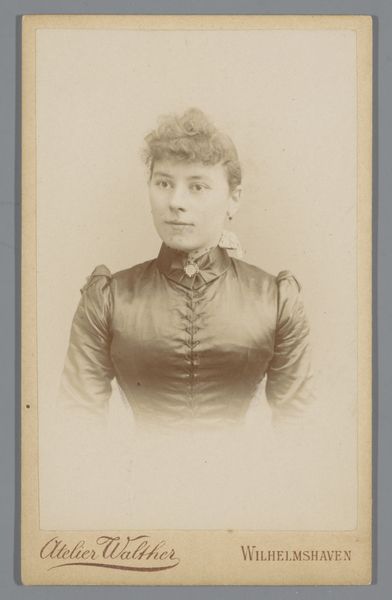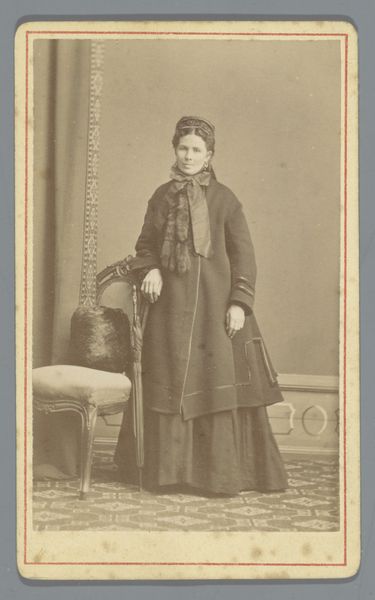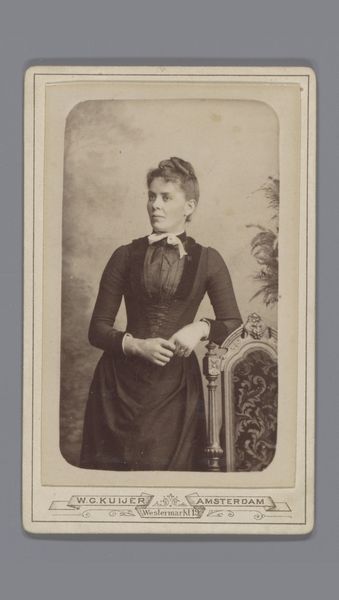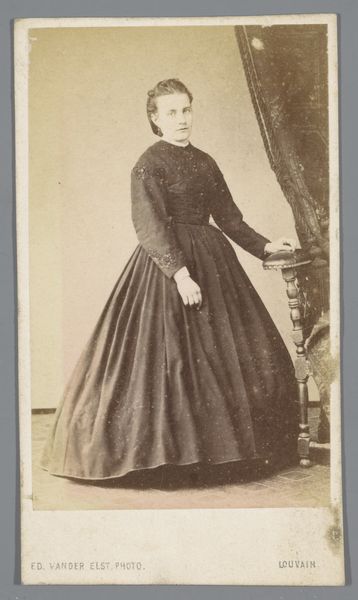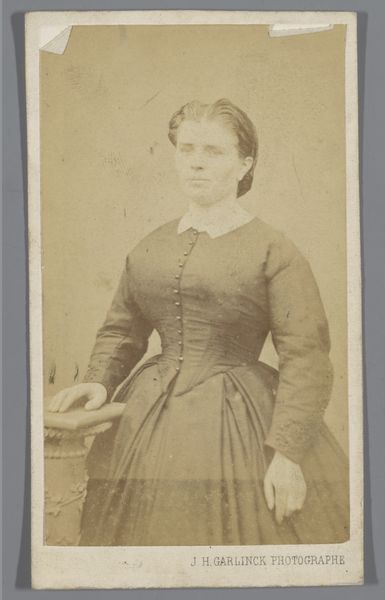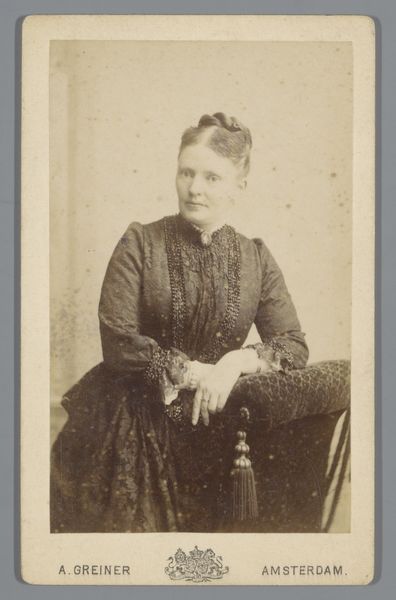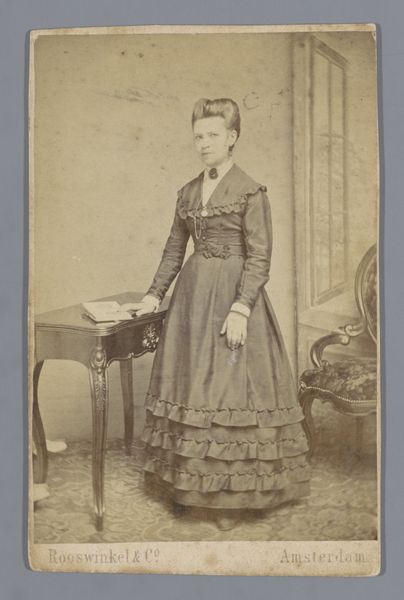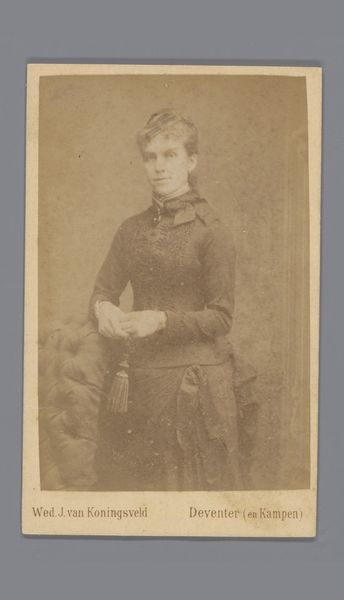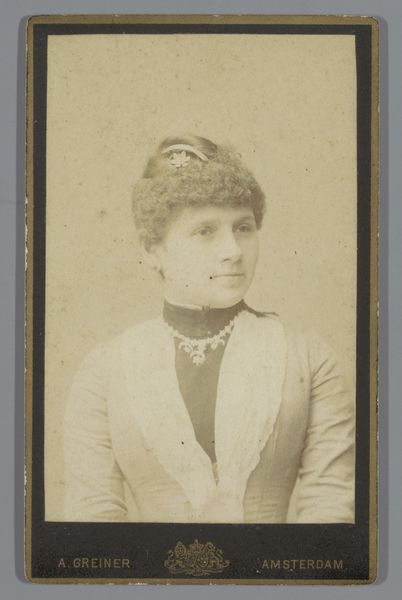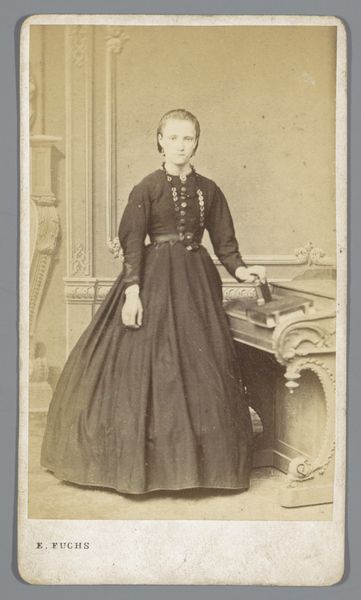
photography, gelatin-silver-print
#
portrait
#
historical design
#
photography
#
historical fashion
#
gelatin-silver-print
Dimensions: height 153 mm, width 98 mm
Copyright: Rijks Museum: Open Domain
Curator: A melancholic air hangs about this piece. There’s a stillness and formality, but also an underlying sense of longing, don't you think? Editor: Indeed. We are looking at "Portret van een onbekende vrouw," which roughly translates to “Portrait of an Unknown Woman.” The photographic print, a gelatin-silver print, dates from around 1880 to 1900. The artist is unfortunately not listed, and remains shrouded in anonymity, just like the sitter. Curator: Her posture strikes me first—that subtle lean, her hand resting almost possessively on the stack of books. Knowledge was a potent symbol, particularly for women of this era. Were these texts meant to signal intellect, social status, a connection to the literary and intellectual world? Editor: I notice that the backdrop is deliberately soft, almost indistinct. It pushes her figure forward, so your eye is drawn to the details of her garment, her carefully arranged hair, and that very slight almost wistful turn of her lips. The sepia tones lend it that faded, bygone quality—the aesthetic markers of Victorian era photographs. Curator: The vase with the floral arrangement next to the stack of books is evocative as well. The way she leans close is as if her very personhood draws on her relationship to these symbolic objects. Could that flowering plant symbolize the blossoming, maybe thwarted, feminine potential within society? I also think about memory. How objects connect us to stories that might be fading. Editor: Yes, memory certainly resonates. Consider the deliberate staging – a set of codes understood at the time. The formality and control evident in the arrangement speak volumes about how individuals wished to be perceived within the stringent social conventions. Notice how those books, although present, are unreadable to us as the viewers? The semiotic layers here ask to be unraveled. Curator: As we observe her gaze, she evades direct engagement with the viewer. Instead, she is looking ever so slightly off to the right—as though preoccupied with a distant horizon, one we cannot quite see. Is it hope? Resignation? This portrait then becomes not just an image of a woman, but also an invitation for contemplation and recognition. Editor: Her expression complicates things, doesn’t it? On closer inspection, the softness that dominates in the photographic work reveals nuances like anxiety. When you couple that with compositional arrangements and material specificities, you start to appreciate how she remains timeless as both a formal artistic artifact and as a study into how one understands what it meant to inhabit a feminine role. Curator: Precisely. Through its symbols and emotional undertones, the piece remains potent, beckoning us to remember lost stories. Editor: It offers us an understanding of the complex relationship between visual culture, personal identity, and history.
Comments
No comments
Be the first to comment and join the conversation on the ultimate creative platform.
